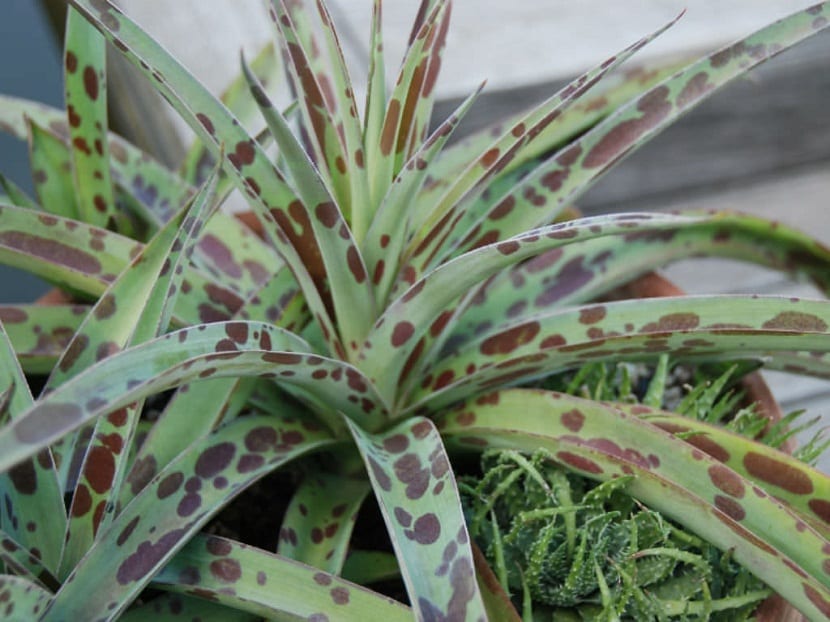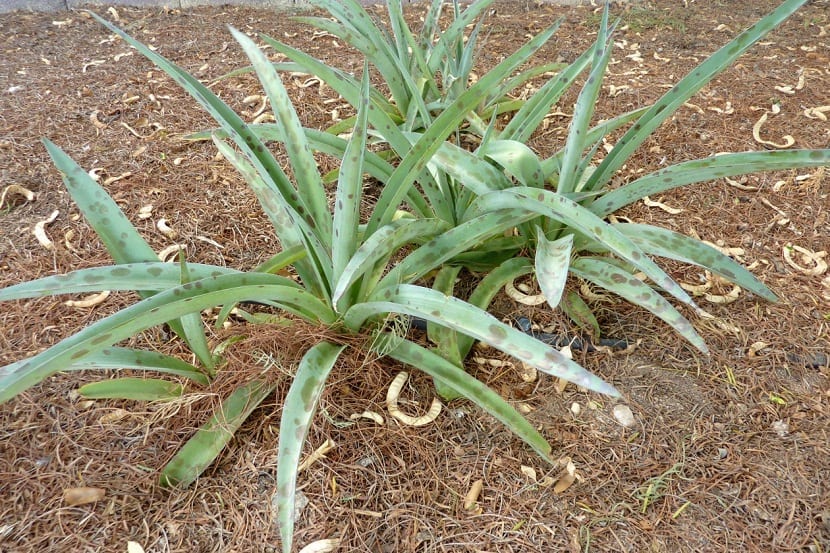
This is a herbaceous plant that belongs to the numerous family Agavaceae, it comes in various colors and sizes and grows in full sun.
It is native to Mexico, this being a nucleus of richness and diversity of the species, only in this territory can it be counted on 32 types of specimens approximately (every day they increase), although there are doubts about the number of legal names, synonyms and doubtful species due to some morphological aspects of their flowers and leaves.
Features

Mexico establishes special protection for some types of Manfreda. It is also found in Central America, the eastern and southeastern United States, spreading to Nicaragua, Honduras, and El Salvador. It has also been established on the Mediterranean coasts.
They are located in the group called amoles, lechuguillas, pescaditos, izotes and magueyes, the latter of great utility in the manufacture of fibers and liquors (tequila, mezcal, pulque), as well as in decoration. Its preservation is important, because indiscriminate use damages the environment and reduces the species.
Each variety has very particular characteristics, beauty, adaptability, easy handling and minimal care. Its genus was defined by the botanist Richard Salisbury and several specialists group it together with another variety of Polianthes (tuberous).
The tuberous root spindle and vertical has purple rosettes or spots in the thick leaves that branch into a very short stem, while its flowers are fragrant and tubular, presented in a spike-like raceme of yellow, green or whitish colors and located at one end of the longer stem.
It has stamens of various shades, predominantly brown and is usually solitary inflorescence. Technicians indicate that 20 taxa flourish in the rainy season and during the dry season only clumps thrive.
Habitat
The habitat of the Manfreda is found in the tropical deciduous forests, the xerophilous scrub and the edges of the Quercus – Pinus and Pinus forests, on rocky, thin soils and steep slopes whose altitudes range from sea level to 2700 meters. It does not demand any type of pruning, compost or application of pesticides.
This plant is used for medicinal or ornamental purposes, even its bulbs since pre-Hispanic times were used as soap due to their high concentration of "sapogenins", chemically speaking are metabolites found mostly in the plant kingdom, act as natural antiviral, anticancer, antifungal, anti-inflammatory, antithrombotic products, among other properties.
That is why the pharmaceutical industry is increasingly interested in its cultivation and protection. An added value is its essential oils, used to make perfume.
Historical data indicate that the presence of the Agavaceae family together with the Cactaceae and during the rise of Mesoamerican cultures in the arid areas where they lived, both genres were definitive due to their multiple uses in food and beverage preparation, medicine, construction, clothing design, fuel and even rituals.
In the XNUMXth century these species described as succulent garden plants were imported to Europe, that is, those whose roots, stem or leaves allow greater storage of water inside for long periods, facilitating survival in dry and arid territories, unlike others in its class.
Plants are autotrophic living beings, that is produce their own food or nutrients through photosynthesis.
Farming

In turn, they are necessary for the life of animals and humans, require interaction with the environment and supply the air we breathe. Sowing and caring for them is essentialThey are the plant lungs that prolong the existence of the beings that inhabit planet Earth.
Likewise, avoiding felling and burning should be the objective of man who under the excuse of producing basic necessities eliminates a very important natural resource. Although it is renewable, nature takes a long time to recover it.
Knowing the different orders existing in a nation or locality, offers the opportunity to identify their use, utility and properties. This responsibility falls on the botanists, who with their knowledge in taxonomy are in charge of describing the morphological peculiarities, origin, habitat and geographical distribution to propose them as new discoveries.
Previously, it must be given a name following the rule of the International Code of Botanical Nomenclature.